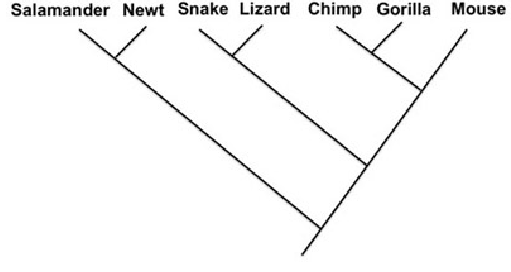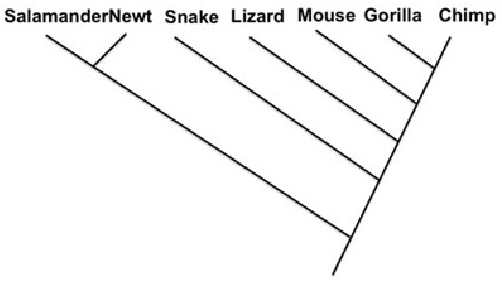You label cells with a radioactive isotope of sulfur (35S). The only molecules that would be radioactively labeled in these cells are:
A. Proteins
B. Carbohydrates
C. Nucleic acids
D. Lipids
Clarify Question
· What is the key concept addressed by the question?
· What type of thinking is required?
· What key words does the question contain and what do they mean?
Gather Content
· What do you know about the composition of different monomers? How does it relate to the question?
Consider Possibilities
· What other information is related to the question? Which information is most useful?
Choose Answer
· Given what you now know, what information and/or problem solving approach is most likely to produce the correct answer?
Reflect on Process
· Did your problem-solving process lead you to the correct answer? If not, where did the process break down or lead you astray? How can you revise your approach to produce a more desirable result?
A. Proteins
Clarify Question
· What is the key concept addressed by the question?
o The question asks about the composition of different polymers.
· What type of thinking is required?
o You are being asked to apply your knowledge of which atoms are found in different monomers to a specific example.
· What key words does the question contain and what do they mean?
o Radioactive isotope of sulfur – this is an atom of sulfur with an extra neutron. It can go through radioactive decay.
o Radioactively labeled – this means growing cells in the presence of the radioactive sulfur. Any molecules that would normally contain sulfur will now become radioactive.
Gather Content
· What do you know about the composition of different monomers? How does it relate to the question?
o Lipids and carbohydrates contain only carbon, oxygen and hydrogen.
o Nucleic acids contain nitrogen, carbon, oxygen and hydrogen.
o Amino acids contain sulfur, nitrogen, carbon, oxygen and hydrogen.
Consider Possibilities
· What other information is related to the question? Which information is most useful?
o The only monomers that contain sulfur are the amino acids cysteine and methionine.
Choose Answer
· Given what you now know, what information and/or problem solving approach is most likely to produce the correct answer?
o Because the amino acids cysteine and methionine are the only sulfur containing monomers, only proteins will become radioactively labeled with 35S.
Reflect on Process
· Did your problem-solving process lead you to the correct answer? If not, where did the process break down or lead you astray? How can you revise your approach to produce a more desirable result?
o This question asked you to apply the composition of amino acids to explain why only proteins would be labeled with 35S. If you got the correct answer, great job! If you got an incorrect answer, where did the process break down? Did you understand what was meant by radioactively labeling a cell? Did you recall that only the amino acids methionine and cysteine contain sulfur?
You might also like to view...
Which of the following statements is true in eukaryotic cells?
A. Transcription occurs in the cytoplasm, and translation occurs in the nucleus. B. Transcription and translation both occur in the nucleus. C. Transcription occurs in the nucleus, and translation occurs in the cytoplasm. D. Transcription and translation both occur in the cytoplasm.
Indicate the phylogenies that show the same relationship as the phylogeny above (Select all that apply).
_____ 
_____ 
_____ 
_____ 
In some populations, we can expect that inbred individuals will have ____ in the population than those not inbred
a. more random mating b. lower levels of surviving offspring c. more changes in allele frequencies d. more heterozygosity e. fewer opportunities to mate
What will be the approximate shape of the age-structure diagram of a rapidly increasing population?
A) a rectangle B) a pyramid C) an inverted pyramid D) an hourglass